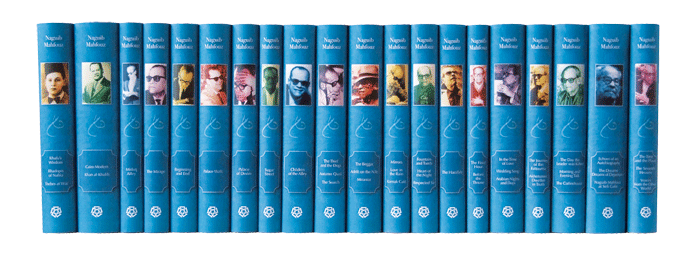Note: Naguib Mahfouz was WINNER of the Nobel Prize for Literature in 1988.
“Who is the narrator?…He is not a specific person…he is neither man nor woman. Perhaps he is the essence of whispers or words spoken aloud, moved by the indomitable desire to immortalize certain memories…He is a heritage woven of angelic history, its truth springing from its intensity and deep desires, embodied by a sure imagination which rushes to invade the heavens even though his feet trip on familiar earth…”
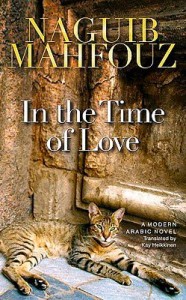 Setting this 1980 novel in Cairo in the early to middle part of the twentieth century, Naguib Mahfouz creates a variety of characters who depict the many manifestations of love. Simple in approach, uncomplicated in its depictions of personalities, and firmly rooted in the social structure that Mahfouz himself knew and grew up in, the author provides insights into the love between parent and child, the passionate and totally committed love between a man and woman, thwarted love and the obsession it breeds, the love between friends, and the love of home, neighborhood, and country.
Setting this 1980 novel in Cairo in the early to middle part of the twentieth century, Naguib Mahfouz creates a variety of characters who depict the many manifestations of love. Simple in approach, uncomplicated in its depictions of personalities, and firmly rooted in the social structure that Mahfouz himself knew and grew up in, the author provides insights into the love between parent and child, the passionate and totally committed love between a man and woman, thwarted love and the obsession it breeds, the love between friends, and the love of home, neighborhood, and country.
Told by a narrator who “tells about” people he “knows,” the novel is less psychological than some that Mahfouz has written – almost a parable – laden with a kind of everyday morality which gives insights into the culture of the time. Though this was the time of King Fuad and King Farouk, before the Revolution of 1952, the novel is virtually devoid of political reference points and never mentions either of the kings. Instead the author conveys the era through descriptions of the activities and professions which the main characters of both sexes pursue, along with descriptions of places which no longer exist – or exist in very different form now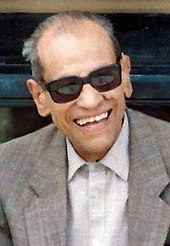 . He recreates the lives of neighborhood people of the middle and upper class, some of them wealthy and some of them much poorer (especially the widows), with all of them firmly entrenched in their own social classes in which few have visions of a future which extends beyond the neighborhood and social milieu they already know. Love, however, pays little attention either to social class or to the traditions which govern marriage and courtship. As the novel unfolds, the course of true love is a rocky, even dangerous, proposition filled with universal predicaments similar to those of modern novels set in different places and times.
. He recreates the lives of neighborhood people of the middle and upper class, some of them wealthy and some of them much poorer (especially the widows), with all of them firmly entrenched in their own social classes in which few have visions of a future which extends beyond the neighborhood and social milieu they already know. Love, however, pays little attention either to social class or to the traditions which govern marriage and courtship. As the novel unfolds, the course of true love is a rocky, even dangerous, proposition filled with universal predicaments similar to those of modern novels set in different places and times.
Sitt Ain, the widowed fifty-year-old mother of a six-year-old son, is regarded as a saint in her neighborhood. A wealthy woman, she supports every charitable cause imaginable, visits the poor and sick, and provides help whenever anyone needs it, finding true happiness in serving others. In the neighborhood she is regarded as “the soft rain flowing over barren land, leaving it green and ripe, dancing with the water of life…the mother of the neighborhood.” Though she wishes for her son Ezzat’s heart to be “sweet and compassionate,” he is active and selfish and destructive. “Does he think he is a sultan?” she asks, laughing.
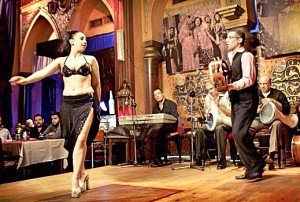
Even when Ezzat is a young child, the question of whom he will marry arises, with Sitt Ain’s much poorer sister hoping that her own daughter Ihsan, the boy’s first cousin, will become his betrothed. At school he becomes friends with Hamdoun Agrama, an orphan living with his aunt, with whom he has much in common and spends much time, and it is in Hamdoun’s poorer neighborhood that Ezzat first meets Badriya al-Manawishi, the girl who will haunt his dreams – and become his obsession – forever. “She left him in a vortex, a vortex that allowed no part of him to remain in its natural place. The world was colors and sounds and thoughts and angels and devils colliding with each other, drunken confidence, readiness to help.”
As Ezzat grows and continues in his schooling, his friendship with Hamdoun continues, though Hamdoun wants to become an actor and playwright and Ezzat plans to go to law school. Circumstances lead to their parting of ways; both seek their own careers, marry, and make lifelong decisions according to the dictates of their own classes. Years later, Ezzat and Hamdoun reconnect briefly through a business transaction, then go their own ways forever. Ezzat’s life and his alienation from all that has 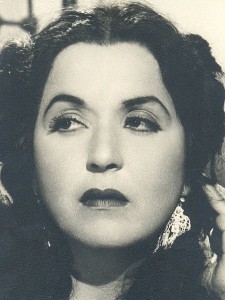 meaning for him, mostly the result of his own actions, have a ripple effect on everyone around him – his mother, his wife, his family, his former friends, and his business associates. Love in all its meanings has become much more complicated than Ezzat ever dreamed possible. Passionate love, idealized love, love of parent and child, love of “home,” and deep friendship, have become complicated when the selfish versions of “love,” including ambition, obsession, repression, and even revenge become involved.
meaning for him, mostly the result of his own actions, have a ripple effect on everyone around him – his mother, his wife, his family, his former friends, and his business associates. Love in all its meanings has become much more complicated than Ezzat ever dreamed possible. Passionate love, idealized love, love of parent and child, love of “home,” and deep friendship, have become complicated when the selfish versions of “love,” including ambition, obsession, repression, and even revenge become involved.
The turning point of the novel comes as a surprise (and feels more convenient for the author than realistic for the reader), but it does provide Mahfouz with a way to expand his themes and take them to the next level. Since Ezzat and the other characters are not fully developed in this theme-based novel, it allows the author to resolve many of the ideas that have been suggested but not otherwise fully integrated into the novel. The moral implications of the turning point are obvious.
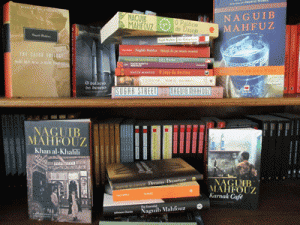 Cultural patterns regarding betrothals and marriage, schooling, social class, and even attitudes toward “appropriate” businesses for the wealthy (as opposed to businesses which deal with the “baser” aspects of life) all affect the action of this novel, with significant attention also placed upon the appearance of women. Sitt Ain, Ezzat’s mother, “still had the luster of youth at fifty years of age…[She was] firmly built, neither weighted down by obesity nor marred by leanness. Her breasts were rounded and high, showing no traces of nursing; they were a concealed center of attraction at the front of her body.” Another woman at about the same age, however, is described as “Fat as a headman’s wife, her face so plump it aroused aversion…At her age women retain remnants of beauty, but she retained nothing.” Certainly their differing financial status could account for some of this disparity, but the author’s emphasis on the women’s appearance is a reminder of just how vulnerable women can be in societies in which they have little opportunity for genuine achievements. A fascinating, if somewhat moralistic, novel of Egypt before its revolution against the king.
Cultural patterns regarding betrothals and marriage, schooling, social class, and even attitudes toward “appropriate” businesses for the wealthy (as opposed to businesses which deal with the “baser” aspects of life) all affect the action of this novel, with significant attention also placed upon the appearance of women. Sitt Ain, Ezzat’s mother, “still had the luster of youth at fifty years of age…[She was] firmly built, neither weighted down by obesity nor marred by leanness. Her breasts were rounded and high, showing no traces of nursing; they were a concealed center of attraction at the front of her body.” Another woman at about the same age, however, is described as “Fat as a headman’s wife, her face so plump it aroused aversion…At her age women retain remnants of beauty, but she retained nothing.” Certainly their differing financial status could account for some of this disparity, but the author’s emphasis on the women’s appearance is a reminder of just how vulnerable women can be in societies in which they have little opportunity for genuine achievements. A fascinating, if somewhat moralistic, novel of Egypt before its revolution against the king.
ALSO: KARNAK CAFE, THE DAY THE LEADER WAS KILLED, THE MIRAGE, IN THE TIME OF LOVE
Photos, in order:
The author’s photo appears on https://en.wikipedia.org/
Ezzat, in adulthood, spends much time in nightclubs in the Rod al-Farag district along the Nile. The nightclub shown here, with belly dancer, is one of the few left in Cairo in 2008. The photo by Ben Curtis of AP accompanies an article on Cairo’s nightclub scene now. http://articles.sfgate.com
Hamdoun, interested in the theater, would have been familiar with Fatima Roushdi (1908 – 1996), an actress known as the “Sarah Bernhardt of the East.” She often played men’s parts. http://en.wikipedia.org
Some of the twenty novels of Naguib Mahfouz published by the American University in Cairo: http://www.aucpress.com
